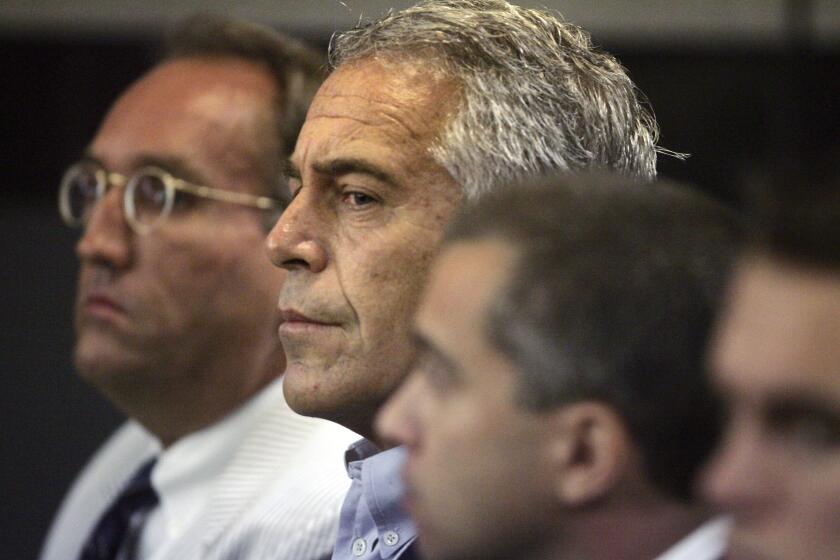NASA Estimate of Rocket Risk Disputed
- Share via
WASHINGTON — Weeks before the disastrous launch of the space shuttle Challenger, a panel of federal safety experts had concluded that the craft’s solid rocket boosters had a higher chance of failing than NASA engineers claimed, two House subcommittees were told Tuesday.
The Interagency Nuclear Safety Review Panel, a federal board that estimates the hazards of space missions carrying radioactive payloads, pegged the likelihood of a booster failure at 1 in 1,000, rather than the 1 in 100,000 figure used by NASA officials as the minimum level for safe spaceflight.
The panel’s three co-chairmen testified that they raised the differing estimates with the National Aeronautics and Space Administration but were unable to “stretch” their analysis enough to match the space agency’s lower risk levels. The testimony was made before two House Science and Technology subcommittees: space, science and applications and energy, research and production.
The safety experts and NASA engineers apparently were still trying to resolve the dispute when the Challenger exploded seconds after launch on Jan. 28, perhaps because of the disintegration of a rubbery seal connecting the right booster rocket’s lower sections.
Issue ‘Still Open’
“We did disagree. Our report has not been written yet because it (the issue) is still open,” said Leven Gray, one of the nuclear safety panel’s three chairmen. He characterized the dispute as one of “many occasions” when experts have differed over technical issues involving nuclear-related spacecraft launches.
However, other witnesses said that the panel considered booster failure the most likely cause of a catastrophic shuttle accident and panel members said that they had studied the question repeatedly since at least 1983.
The panel’s estimates were part of a risk analysis prepared before two now-canceled shuttle launches that would have lofted plutonium-powered satellites into interplanetary missions. The panel, composed of representatives of NASA, the Energy Department and the Pentagon, assesses the odds of nuclear accidents on such missions for the White House, which uses the figures to decide whether the launches should proceed.
Tuesday’s four-hour hearing heard officials of NASA and the nuclear panel repeatedly describe their dispute over solid rocket boosters as a question of mathematical judgment, not actual safety.
Analysis Mistrusted
NASA officials testified that they mistrusted the calculations of three professional risk analysts, whose research led to the safety panel’s 1 in 1,000 estimate of risk. Their predictions rested on historical failure rates of 1,903 previous solid-rocket launches.
NASA chief engineer Milton A. Silveira said the calculations ignored advances in rocket design and safety margins built into manned-flight rockets. NASA tried similar estimates for its 1960s Apollo missions, he said, but the results were “so pessimistic that we threw away the study.”
Instead, he said, NASA uses engineering judgment, not calculations, to reach a “design objective” of one failure in 100,000 uses. The shuttle boosters were built to that safety level, he said.
Col. John P. Joyce, the Pentagon member of the nuclear safety panel, said that the group had taken up the differing estimates with NASA “on several occasions.” However, despite NASA’s position, the panel concluded that “we couldn’t stretch the historical data” to match the space agency’s 1 in 100,000 risk estimate.
Explanation Withheld
Joyce, Gray and a third panel member, Energy Department representative Norman Klug, declined to elaborate on their testimony, saying that they have been told by the White House not to speak without permission.
The House subcommittees later met behind closed doors and heard estimates of the human casualties that could result from a shuttle explosion involving a plutonium payload. Officials said publicly that the casualties would probably be “minor” but that the number depended on the size of a blast and the height at which it occurred.
More to Read
Sign up for Essential California
The most important California stories and recommendations in your inbox every morning.
You may occasionally receive promotional content from the Los Angeles Times.













